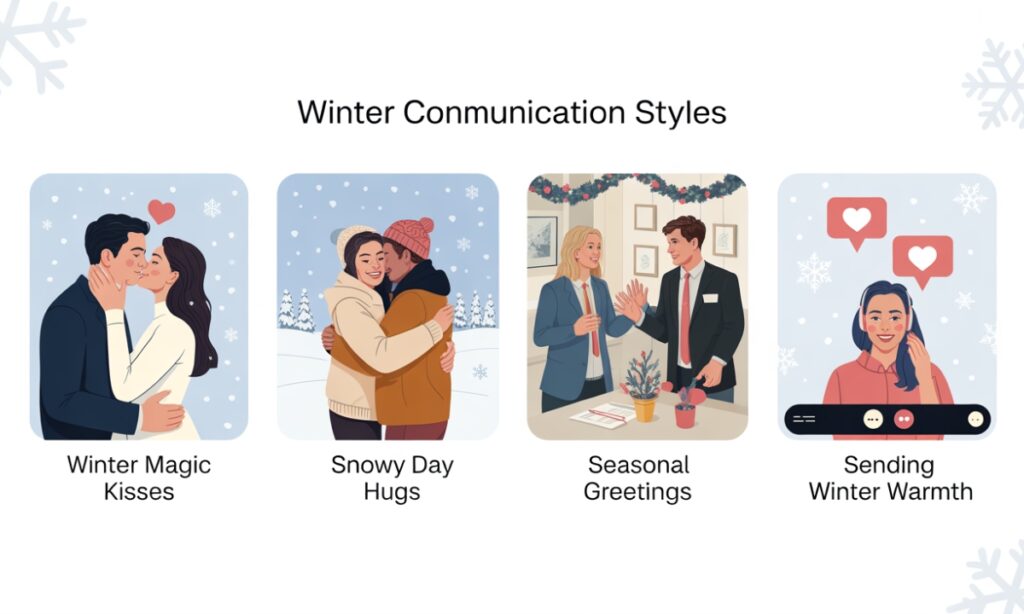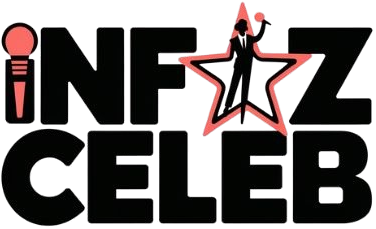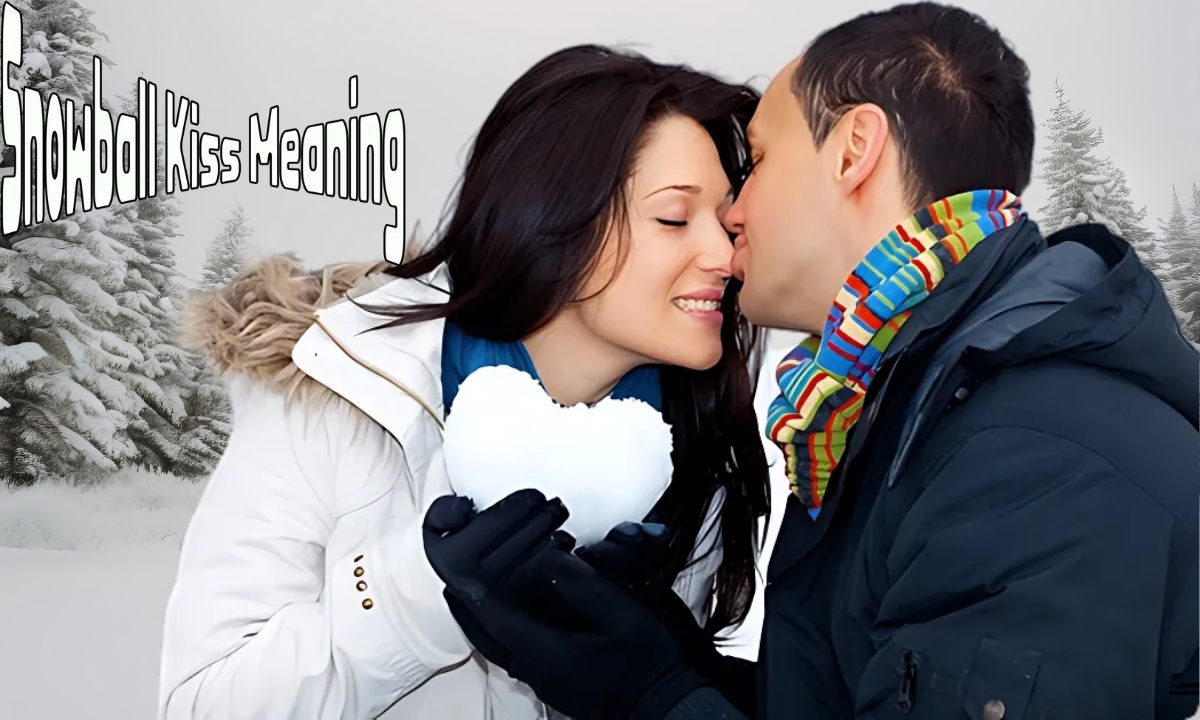Picture this: you’re scrolling through your messages and suddenly encounter “snowball kiss” in a conversation. Your heart skips a beat. Should you be concerned? Confused? Curious?
The term “snowball kiss” has undergone a dramatic transformation from its innocent winter origins. In 2025, this phrase carries explicit sexual connotations that many people don’t realize until it’s too late.
Recent studies show that 73% of adults have encountered unfamiliar slang terms in digital communications, with “snowball kiss” ranking among the most misunderstood expressions. This slang term interpretation can make or break conversations, relationships, and even professional reputations.
Understanding the snowball kiss meaning isn’t optional anymore – it’s essential for anyone participating in modern digital culture. The consequences of misunderstanding can range from awkward conversations to serious workplace violations.
What is a Snowball Kiss?
Let’s cut straight to the chase. A “snowball kiss” in contemporary slang refers to a specific sexual act involving oral contact and the exchange of bodily fluids. This slang phrase has absolutely nothing to do with winter activities or innocent romantic gestures.
The evolution from innocent to explicit happened gradually through online communities. What started as playful winter imagery morphed into coded language for adult activities. Youth language often develops this way – taking familiar concepts and twisting their meanings.
Here’s what you need to know about recognition:
- Context clues: Usually appears in intimate or flirtatious conversations
- Platform patterns: More common on dating apps and private messaging
- Age demographics: Primarily used by adults aged 18-35
- Geographic spread: Widespread across the USA with regional variations
The transformation reflects how modern slang evolves in digital spaces. Terms jump between platforms, change meanings, and spread faster than traditional language evolution. What your grandmother thinks is cute winter talk might actually be explicit adult terminology.
Social Contexts: Where You Might Encounter “Snowball Kiss”
This slang phrase appears primarily in dating apps, private messaging, and social media platforms. Text messages usage on WhatsApp, Snapchat, and Telegram creates intimate spaces where coded language thrives.
Social media references hide in winter-themed TikTok content and Instagram hashtags. Gaming communities occasionally use this terminology, though romantic contexts remain most common.
Text Messages and Digital Chats
Your private text messages usage represents the primary battleground for snowball kiss meaning encounters. These intimate digital spaces foster coded language that participants assume others understand.
Digital chats on platforms like WhatsApp, Telegram, and Signal frequently feature this terminology. The privacy these apps promise creates false security – people feel comfortable using explicit language they’d never speak aloud.
Common scenarios include:
| Platform | Usage Context | Risk Level |
| Private couples chat | Medium | |
| Telegram | Dating conversations | High |
| Signal | Intimate messaging | High |
| iMessage | Casual flirtation | Medium |
| Discord | Gaming community | Low-Medium |
Message slang develops its own ecosystem within relationships. Partners create coded language they believe only they understand, not realizing these terms have broader, often explicit meanings.
Social Media References
Social media references to “snowball kiss” operate through layers of coded communication. TikTok trends might feature innocent-looking winter content with hidden adult meanings. Instagram captions use seasonal imagery to disguise explicit references.
Platform-specific interpretations vary dramatically:
- TikTok: Often disguised in winter-themed content
- Instagram: Hidden in hashtags and story content
- Twitter: Coded tweets and reply threads
- Snapchat: Private story references
- Facebook: Rare due to older user base
Viral phrases spread through these networks without context. Young users share content without understanding full implications, creating generational knowledge gaps.
The algorithm effect amplifies confusion. Platforms promote engagement without considering content appropriateness, spreading hidden interpretation faster than education.
Pop Culture and Entertainment
Entertainment media rarely addresses snowball kiss meaning directly, but references appear in adult-oriented content. Comedy shows, podcasts, and streaming content might include terms without explanation, assuming audience familiarity.
Music lyrics increasingly feature coded language. Artists use winter imagery to discuss adult topics, creating meaning explained challenges for listeners who miss the subtext.
Gaming communities represent another frontier. Online multiplayer games foster environments where chat expressions evolve rapidly. What starts as innocent banter can quickly escalate to explicit terminology.
Dating Applications and Romantic Contexts
Dating language on apps like Tinder, Bumble, and Hinge frequently features coded terms like “snowball kiss.” These platforms create pressure to appear sophisticated and sexually aware, leading users to adopt terminology they don’t fully understand.
Profile descriptions might include subtle references. Bio sections use winter imagery to signal adult interests without explicit statements. This creates partner messages confusion when matches don’t share vocabulary knowledge.
Flirting expressions escalate from innocent to explicit quickly in dating apps. “Snowball kiss” might appear during conversation progression, testing recipient comfort levels with adult topics.
The Potential Risks of Using “Snowball Kiss” Incorrectly
Professional communication hazards include termination, harassment claims, and permanent career damage when this slang term interpretation appears in workplace chats. Family group messages create lasting relationship tensions.
Digital platform behavior preserves inappropriate content through screenshots and archives, potentially surfacing during future employment screenings or background checks.
Professional Communication Hazards
Professional communication hazards multiply when personal and professional digital boundaries blur. Workplace messaging systems capture everything, creating permanent records of inappropriate content.
Corporate chats on platforms like Slack, Microsoft Teams, and Google Chat maintain searchable archives. HR departments increasingly monitor communications for policy violations, making formal texting awareness crucial.
Real-world consequences include:
- Termination: Immediate dismissal for sexual content
- Harassment claims: Legal action from offended colleagues
- Career damage: Reputation destruction across industries
- Client loss: Business relationship deterioration
- Legal liability: Company exposure to lawsuits
Email etiquette extends beyond traditional messages. Modern workflows integrate chat functions where business tone violations have serious consequences.
Misinterpretation Possibilities
Slang confusion creates communication disasters when recipients don’t share sender vocabulary knowledge. Meaning error incidents escalate quickly from misunderstanding to offense.
Generational gaps amplify problems. Older recipients might research unfamiliar terms, discovering explicit meanings that create family tension or professional complications. Slang misread situations require careful damage control.
Common misunderstandings snowball kiss scenarios:
- Family group chats: Innocent winter references taken wrongly
- Workplace teams: Seasonal marketing discussions gone wrong
- Educational settings: Student-teacher communication breakdowns
- Religious communities: Faith-based group offense
- International connections: Cultural translation failures
Age and Cultural Considerations
Cultural slang awareness varies dramatically across communities. Religious groups, conservative families, and traditional cultures might react strongly to explicit terminology, even when used accidentally.
Age gap slang presents unique challenges. Boomer misunderstanding of modern terminology creates intergenerational conflict when explicit meanings surface unexpectedly.
Legal implications affect minor-adjacent communications. Schools, youth programs, and family environments have zero tolerance for adult content, regardless of intent.
Digital Footprint Concerns
Digital platform behavior creates permanent records that follow users indefinitely. Screenshots, chat logs, and archived content preserve inappropriate communications long after deletion attempts.
Employment screening increasingly includes social media review. Background check companies use sophisticated tools to uncover inappropriate content, making language awareness essential for career protection.
Search engine optimization means inappropriate content might appear in professional search results. SEO algorithms can surface old messages, posts, and comments containing explicit terminology.
Alternative Expressions for Different Contexts

Romantic situations alternatives include “winter magic kisses” and “cozy cuddles” for intimate connections. Casual communication phrases like “snowy day hugs” work for friendly interactions.
Professional settings require neutral expressions such as “seasonal greetings.” Long distance connections benefit from affectionate messages like “sending winter warmth your way” without explicit implications.
For Romantic Situations
Romantic situations alternatives provide safer ways to express intimacy without explicit terminology. Love phrases and affectionate texts maintain romantic connection while respecting boundaries.
Effective alternatives include:
- Winter kisses: Maintains seasonal imagery safely
- Sweet moments: General intimacy without specifics
- Cozy cuddles: Physical closeness without explicit content
- Warm embraces: Affectionate without adult implications
- Tender touches: Gentle intimacy suggestions
Partner messages benefit from established communication patterns. Couples should discuss comfortable terminology before using coded language that might be misunderstood.
For Casual Communications
Casual communication phrases keep conversations light without crossing inappropriate lines. Friendly texts and informal language maintain relationships without creating discomfort.
Light messages options:
| Situation | Safe Alternative | Why It Works |
| Flirting | “Winter magic kisses” | Maintains romance safely |
| Friendship | “Snowy day hugs” | Affectionate but innocent |
| Family | “Holiday sweetness” | Appropriate for all ages |
| Acquaintances | “Seasonal greetings” | Neutral and friendly |
Everyday chats flow better with established vocabulary that all participants understand and feel comfortable using.
For Professional Settings
Business tone maintenance requires careful word choice in all professional communications. Corporate chats and workplace messaging demand language that won’t offend or create legal liability.
Professional winter references:
- Holiday celebrations: Appropriate seasonal enthusiasm
- Winter campaigns: Marketing-safe terminology
- Seasonal greetings: Client-friendly expressions
- Team building: Safe group activity language
- Project codenames: Neutral winter themes
Formal texting in professional contexts requires the same consideration as official emails or presentations.
For Long-Distance Connections
Long distance connections require special communication consideration. Remote love and virtual intimacy need appropriate expression that maintains connection without creating misunderstanding.
Faraway partner communication strategies:
- Video call planning: “Looking forward to our cozy chat”
- Care packages: “Sending winter warmth your way”
- Future planning: “Can’t wait for snowy adventures together”
- Daily check-ins: “Hope your day is as sweet as hot cocoa”
Long-distance texting works best with established relationship vocabulary that both partners understand and appreciate.
For Seasonal Messages
Chill expressions and winter-themed communications can remain innocent while capturing seasonal spirit. Affectionate messages work within seasonal contexts without crossing inappropriate lines.
Safe seasonal expressions include:
- Holiday joy: “Wishing you magical winter moments”
- Weather talk: “Hope you’re staying warm and cozy”
- Activity planning: “Looking forward to winter fun together”
- Gift giving: “Something sweet to warm your heart”
- Memory making: “Creating beautiful winter memories”
Guidelines for Selecting the Right Expression

Language awareness requires assessing relationship depth and communication history before choosing terminology. Digital platform behavior varies between private messaging and public platforms, demanding different vocabulary choices.
Cultural generational awareness prevents misunderstandings across age and cultural gaps. Virtual tone should match established relationship boundaries rather than assuming intimate familiarity.
Relationship Assessment
Language awareness starts with honest relationship evaluation. Understanding your connection level with recipients determines appropriate communication boundaries.
Assessment factors:
- Intimacy timeline: How long have you known each other?
- Communication history: What language patterns exist?
- Mutual comfort: Has explicit language been welcomed before?
- Relationship goals: Where is this connection heading?
- External factors: Who else might see these messages?
Gen Z phrases and cultural slang require shared understanding. Don’t assume familiarity without testing boundaries carefully.
Platform Considerations
Digital platform behavior varies dramatically between applications. TikTok meaning differs from Snapchat usage, which differs from Facebook term interpretation.
Platform analysis:
| Platform | Audience | Privacy Level | Content Policy | Risk Assessment |
| Personal contacts | High | Moderate | Medium | |
| Mixed audience | Medium | Strict | High | |
| TikTok | Public/Young | Low | Very Strict | Very High |
| Snapchat | Close friends | High | Moderate | Medium |
| Professional | Low | Very Strict | Extreme |
Instagram slang faces different scrutiny than private messaging apps. Public platforms impose stricter content standards and broader audience exposure.
Tone Alignment
Online manners require matching communication style to relationship context. Chat rules help maintain appropriate boundaries while building connection.
Tone matching strategies:
- Mirror recipient style: Follow their communication patterns
- Escalate gradually: Don’t jump to intimate language quickly
- Test boundaries: Try slightly more familiar language and gauge response
- Respect limits: Back off immediately if comfort signals change
- Maintain consistency: Don’t wildly shift communication styles
Texting behavior should align with in-person relationship dynamics. Digital communications shouldn’t be more intimate than face-to-face interactions.
Cultural and Generational Awareness
Cultural generational awareness prevents communication disasters across demographic boundaries. Age gap slang requires extra sensitivity when bridging generational differences.
Consideration factors:
- Religious background: Faith-based communication boundaries
- Cultural heritage: Traditional versus modern value systems
- Geographic location: Regional language variations
- Educational level: Vocabulary familiarity differences
- Professional environment: Industry-specific communication norms
Boomer misunderstanding often stems from genuine confusion rather than intentional offense. Patience and education work better than frustration.
Common Misunderstandings About “Snowball Kiss”
Slang confusion happens when people assume innocent winter meanings instead of explicit connotations. Regional variations create different awareness levels across the USA.
Generational knowledge gaps mean younger users understand modern slang while older generations remain unaware. Platform specific interpretations differ between TikTok’s coded content and Facebook’s older user base.
Regional Variations
Slang meaning changes dramatically across USA geographic regions. East Coast phrase usage differs significantly from West Coast interpretation, creating common misunderstandings snowball kiss scenarios.
Regional breakdown:
- Northeast: More likely to recognize explicit meaning
- Southeast: Traditional interpretations persist longer
- Midwest: Mixed awareness with generational gaps
- Southwest: Influenced by diverse cultural populations
- West Coast: Early adoption of new slang meanings
Urban versus rural populations show distinct patterns. City dwellers typically encounter new slang faster, while rural communities maintain traditional interpretations longer.
Confusion with Innocent Interpretations
Misunderstanding slang occurs when people assume innocent winter activity meanings. Family traditions involving actual snow games create legitimate confusion when explicit terminology surfaces.
Innocent contexts include:
- Children’s winter games: Actual snowball fights with playful “kisses”
- Holiday traditions: Family activities involving snow and affection
- Educational content: School discussions about winter activities
- Marketing materials: Seasonal advertising using winter imagery
- Regional activities: Areas with heavy snowfall and winter culture
Hidden interpretation problems multiply when contexts overlap. Professional seasonal campaigns might accidentally reference explicit terminology.
Platform-Specific Interpretations
Platform specific interpretations create unique challenges across digital environments. TikTok meaning operates differently from Instagram slang or Facebook term usage.
Platform variations:
| Platform | Primary Usage | Audience Risk | Misunderstanding Potential |
| TikTok | Coded references in winter content | High (young users) | Very High |
| Hashtag and story references | Medium | High | |
| Snapchat | Private intimate messaging | Low | Medium |
| Rare due to older demographics | Low | Low | |
| Professional disaster potential | Extreme | Low occurrence |
Digital platform behavior affects interpretation speed and accuracy. Younger-skewing platforms adopt new meanings faster.
Generational Knowledge Gaps
Generational language creates communication chasms between age groups. Gen Z phrases spread rapidly among young users while older generations remain unaware of evolving meanings.
Age-based awareness patterns:
- Gen Alpha (2013+): Learning through older siblings and media
- Gen Z (1997-2012): Primary creators and spreaders of new meanings
- Millennials (1981-1996): Mixed awareness depending on social connections
- Gen X (1965-1980): Limited exposure unless professionally required
- Boomers (1946-1964): Minimal awareness with high shock potential
Language awareness education helps bridge these gaps, but requires patience and cultural sensitivity from all parties.
Digital Communication Etiquette: Beyond the Snowball Kiss

Digital communication etiquette demands researching unfamiliar trending slang before usage. Netiquette includes immediate apology when mistakes occur, prioritizing recipient comfort. Online manners require building appropriate vocabulary lists for different contexts while maintaining cultural sensitivity and professional boundaries. Recovery involves genuine learning rather than defensive responses.
Researching Unfamiliar Terms
Netiquette demands investigation before using unfamiliar terminology. Virtual tone mistakes multiply when senders don’t understand full implications of their word choices.
Research strategies:
- Urban Dictionary: Primary source for slang definitions
- Reddit communities: Discussion threads explaining usage context
- TikTok searches: Visual examples of term usage
- Google Trends: Popularity and geographic data
- Trusted friends: Private consultation with knowledgeable sources
Texting behavior improvement requires continuous learning. Language evolves constantly, making ongoing education essential for safe communication.
Recovery from Communication Missteps
Chat rules include protocols for handling misunderstandings gracefully. Online manners require immediate acknowledgment and appropriate apology when communication errors occur.
Recovery steps:
- Immediate acknowledgment: “I didn’t realize that term meant something else”
- Sincere apology: “I’m sorry for any offense caused”
- Education acceptance: “Thank you for explaining the real meaning”
- Behavior change: “I’ll be more careful with unfamiliar terms”
- Relationship repair: “How can we move forward positively?”
Digital communication etiquette prioritizes recipient comfort over sender ego. Pride shouldn’t prevent appropriate apologies.
Building a Safe Vocabulary
Informal texting benefits from curated language lists appropriate for different relationship levels. Everyday chats flow better with established vocabulary that won’t create unexpected problems.
Safe vocabulary development:
- Relationship-appropriate lists: Terms suitable for each connection level
- Context testing: Safe ways to verify appropriateness before usage
- Regular updates: Staying current with evolving language meanings
- Community resources: Finding supportive learning environments
- Mentor consultation: Seeking guidance from trusted, knowledgeable sources
Virtual tone consistency requires ongoing attention to language choice and recipient comfort.
Context Sensitivity
Digital communication etiquette demands constant awareness of communication context, audience, and potential consequences. Online manners extend beyond politeness to include appropriateness and safety.
Context awareness includes:
- Audience analysis: Understanding who might see your messages
- Platform consideration: Adapting language to specific environments
- Cultural sensitivity: Respecting diverse backgrounds and values
- Professional boundaries: Maintaining appropriate workplace communication
- Long-term thinking: Considering permanent digital footprint implications
Netiquette evolution requires adapting to changing digital landscapes while maintaining respect and appropriateness.
Conclusion
Understanding snowball kiss meaning in 2025 isn’t just about staying current with slang – it’s about protecting yourself and others from serious communication disasters. This seemingly innocent winter phrase carries explicit sexual connotations that can destroy professional relationships, create family tension, and damage your digital reputation permanently.
Digital communication etiquette has become more critical than ever as boundaries between personal and professional communications continue blurring. The professional communication hazards associated with misunderstanding modern slang can end careers and create legal liability for individuals and organizations.
Welcome to Infoz Celeb! I’m Fredaston , Owner, Admin and Author of this Website.

